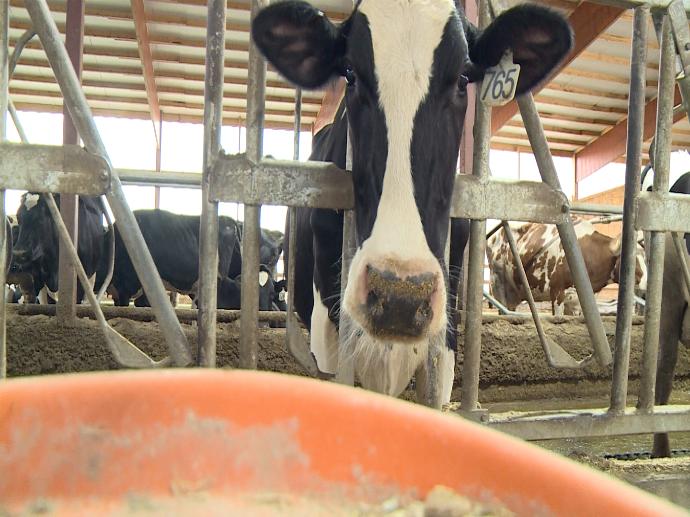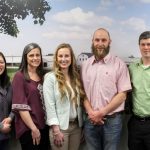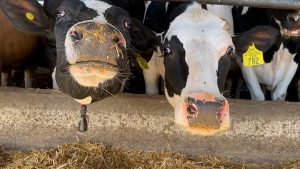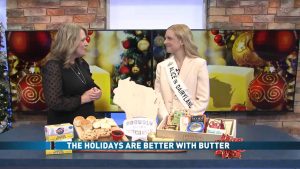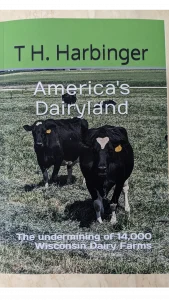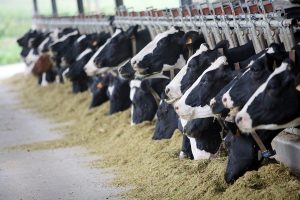
“It’s kind of a calling,” said Doug Nelson of Nellie Holsteins in Eau Claire.
A calling that helps pave the way for generation after generation.
“I’ve been farming my whole life here,” said Doug’s son, Derrick.
Doug and Derrick’s hard work, along with Derrick’s wife Miranda, is all part of their effort to keep living the dream of being a small family farm in Wisconsin.
Over the years, the farming “reality” has rapidly changed, especially for small family farms.
“We used a lot of modern technology, like a robot to push the feed, and automatic scrapers for the manure system,” Doug said.
But it’s not just the technology that’s changing; it’s your neighbors and friends, the family farms that couldn’t keep on going.
“It used to be we had five farms within a mile here, now I’m the only one in a 3-mile radius,” Doug said.
The Nelson’s are one of those last few family farms standing over on Maple Road on the south side of Eau Claire. They’ve been farming this land since the 1880’s, and with time, comes a lot of change. Today, they milk about 200 cows in two-and-a-half hours, when they used to milk 50 in the same amount of time.
While herd numbers are up, along with milk production, it’s the unfortunate reality of there being fewer farms in the state. According to the National Agricultural Statistics Service, in April of 2004, there were 15,700 milk cow herds in Wisconsin. Fast forward ten years, we’re down to 10,407 in 2014. Today, in April of 2019 milk cow herds sit at 7,898. That’s basically a 50 percent decrease in the last 15 years. So while numbers keep going down, small family farms are going to have to do something.
So how do families like the Nelson’s keep things going?
“In the transition process, we had to get bigger to sustain 2-generations of a farm,” Miranda said.
Getting bigger to stay small: the Nelson’s are part of the changing definition of what we know as a small family farm today.
“We’re pretty much committed now,” Doug said. “We built this new facility, and are keeping it going. When I transition out of it, they’ll take over. They can do what they want, make it bigger, but it’s kind of nice keeping the family name in it. I don’t know if it’s going to continue on after them but we’ll see what happens.”
However, like many farmers in today’s reality of farming, getting a second job is not unheard of. Miranda currently works as a dairy consultant.
“Eventually, I’d like to come home to work on the farm fulltime and getting up to a size that we could sustain our family would be ideal.”
But while the industry goes through ups and downs, it’s the people that continue to work night and day to make up what we call America’s Dairyland.
“Size really doesn’t matter,” Derrick said. “It’s really the family that’s the heart and soul of the operation.”
Keeping the heart and soul in farming is just what the industry needs, especially from the young generation. Ten-year-old Diesel Larson, who was more than excited to feeds some calves at his neighbors in Chippewa Falls, knows it’s going to take a lot of hard work to be a farmer, but he says he’s ready to be a farmer.
“I like the animals and I like the big equipment.”
Diesel is hoping to get his first job on a farm this summer.
As for keeping the dairy industry alive in the state, Miranda says not to worry.
“Wisconsin will maintain and be the dairy state, and dairy economy will really drive our state,” she said. “It’ll just be in a different aspect and traditions change. It’s sad to see all these farms go, as time moves on you have to progress with the industry.”
